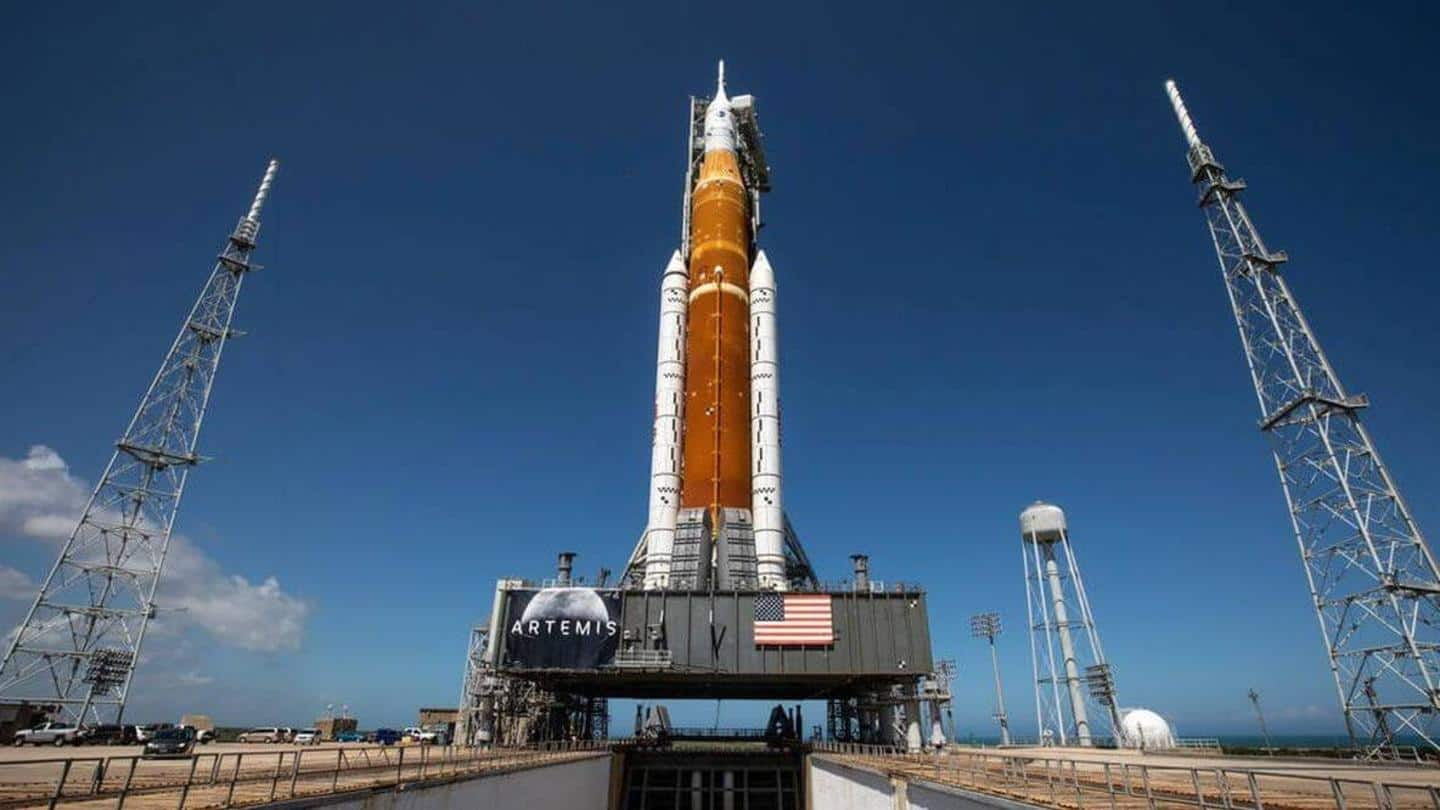
NASA may attempt to launch Artemis 1 on September 23
What's the story
If things go according to plan, NASA's historic Artemis 1 moon mission could see a September lift-off. The giant Space Launch System (SLS) rocket carrying the Orion capsule may be launched on September 23 or September 27.
For this to happen, the agency will have to fix the hydrogen leak first. It will also need a critical waiver from the US Space Force.
Context
Why does this story matter?
NASA is not ready to give up on its dream of launching the Artemis 1 mission in September. Despite two setbacks, the agency is pushing hard to make sure that the giant SLS rocket makes its first trip this month itself.
There are two tall hurdles that it has to pass to accomplish this feat. We'll see whether that happens or not.
Next attempt
Another September launch attempt was ruled out earlier
The Artemis 1 mission could be launched as early as September 23, with September 27 as backup, said Jim Free, NASA's associate administrator for exploration systems development.
The mission's lift-off was scrubbed twice before. The last attempted launch from the Kennedy Space Center in Florida was on September 3.
The chances of a third attempt in September were ruled out previously.
Factors
Next launch attempt in September will depend on two factors
The next launch attempt of Artemis 1 on either September 23 or September 27 will depend on two factors.
Firstly, NASA will have to fix the persistent hydrogen leak from the launch-pad itself.
The agency will also need to secure permission from the US Space Force to extend the time needed to check batteries on the SLS' flight termination system (FTS).
FTS
Testing batteries of FTS requires rolling SLS back to hangar
The US Space Force oversees rocket launches in the Eastern Range, including Florida. It requires NASA to test the FTS, which comes into play when the rocket changes its course, every 25 days.
Testing the FTS involves rolling SLS back to the Vehicle Assembly Building (VAB). This would mean weeks of additional delay.
This is why NASA has requested a waiver.
Information
SLS can only make a specified number of roundtrips
Taking the SLS to VAB and back to the launch pad has another issue involved. The rocket is only certified to make the trip from VAB to the launch pad so many times. As of now, only two roundtrips are left.
Hydrogen leak
The leak has to be fixed by replacing a seal
Even if NASA secures an extension from the US Space Force, it still has its hands full with the hydrogen leak that played spoilsport last time. The agency must fix the leak by replacing a seal around a fuel line on the rocket's core booster.
The SLS has to pass a fuel test then. This will not take place before September 17.
Fueling process
A 'gentler and kinder' fueling process this time
NASA will follow a "kinder and gentler" fueling approach this time, said Mike Bolger, Exploration Ground Systems Manager.
The agency is investigating whether one of the manual fueling commands caused the leak or not. It is possible that the command overpressurized the hydrogen fuel line.
The fueling test will determine whether the fixes have worked or not.
Launch windows
On September 23, there is a 120-minute launch window
If everything goes well, the lift-off on September 23 will take place at 4:17 pm IST (6:47 pm EDT) during a 120-minute launch window.
On September 27, the lift-off is scheduled for 9:07 pm IST (11:37 am EDT) during a 70-minute window.
If the mission is launched on either of these days, it would return to Earth on October 18 and November 5, respectively.